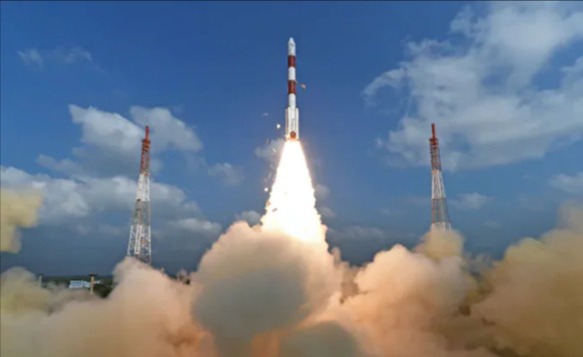India has made another significant advancement in space technology with the launch of Aditya-L1, India’s first space-based solar observatory. Coming just ten days after Chandrayaan-3 landed successfully on the moon, this mission marks a crucial step toward understanding solar power and its effects on space weather.
A Triumph in Engineering: The Launch of Aditya-L1
On a sunny Saturday at 11:50am local time, India’s Polar Satellite Launch Vehicle (PSLV-XL) lifted off from the Satish Dhawan Space Centre, carrying Aditya-L1 into space. The launch was exceptionally different in terms of its complexity. For the first time, the PSLV’s upper stage executed two burn sequences to insert the spacecraft into its designated elliptical orbit. The mission, codenamed PSLV-C57, further consolidates India’s reputation for mastering intricate space technologies.
The Incredible Journey: Aditya-L1’s Path to the Halo Orbit
Upon successful launch, the Aditya-L1 is set to traverse a staggering distance of 932,000 miles over a period of 125 days to reach its destination—a halo orbit around Lagrangian point L1. Situated between the Earth and the Sun, this point allows for continuous monitoring of solar activities without any interruptions caused by occultation and eclipse. It’s an ambitious journey that ISRO Chairman S. Somanath referred to as a “long journey” requiring “some Earth maneuvers” before it reaches its halo orbit.
A Suite of Advanced Instruments: What’s Onboard?
The Aditya-L1 spacecraft is packed with seven payloads designed to study various aspects of the sun and space weather. These include four for remote sensing, such as a solar ultraviolet imaging telescope and a visible emission line coronagraph. Three other instruments are designed for on-site experiments, like a solar wind particle analyzer and a tri-axial high-resolution digital magnetometer. Each piece of equipment has its own role, complementing others to provide a comprehensive understanding of solar behavior.
Exploring the Sun: The Scientific Goals
The mission aims to study three critical regions of the sun: the photosphere, chromosphere, and corona. By focusing on these areas, the mission seeks to enrich our understanding of solar activities and their subsequent effect on space weather. It’s not just a leap for India but an asset to the global scientific community engaged in heliophysics, according to Nigar Shaji, the project director for the Aditya-L1 mission.
Chandrayaan-3: The Preceding Victory
This mission comes on the heels of the Chandrayaan-3’s successful landing on the moon. That mission has not only elevated India’s standing in the space community but also paves the way for the country’s ambitious plans for human landings on the moon. The two missions combined show the multifaceted capabilities that ISRO is developing, from lunar surface studies to heliophysics.
Partnerships and Policies: India’s Future in Space
India became a signatory of NASA’s Artemis Accords and is expected to participate in joint space experiments with partner nations. The country has also laid down its space policy to encourage private sector participation. With over 150 space tech startups and increasing investments, India’s future in space looks promising. The nation saw a 17% growth in space tech startup funding in 2022 and anticipates further growth due to relaxed norms on foreign direct investments.
In Summary
The Aditya-L1 mission represents a historic moment for India as it ventures into the realm of solar exploration for the first time. Following Chandrayaan-3’s success, India is rapidly increasing its space technology capabilities and working towards contributing significantly to global scientific knowledge. According to Deputy Minister Jitendra Singh, this mission represents India’s “sunshine moment.”
- Understanding Backflow Testing and Annual Fire Alarm Inspections: Essential for Safety and Compliance - April 1, 2025
- Preamplifiers – Significance, Types, Benefits - January 10, 2025
- The Science of Bass: Understanding How Subwoofers Work - January 10, 2025

